Related Research Articles
Giovanni Comisso was an important Italian writer of the twentieth century, appreciated by Eugenio Montale, Umberto Saba, Gianfranco Contini and many others.
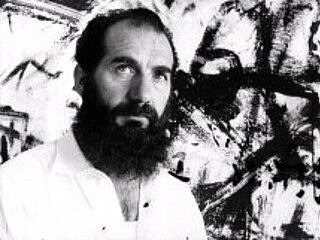
Emilio Vedova was a modern Italian painter. He is considered one of the most important artists to emerge from Italy's artistic scene, Arte Informale.

Renato Guttuso was an Italian painter and politician. His best-known works include Flight from Etna (1938–39), Crucifixion (1941) and La Vucciria (1974). Guttuso also designed for the theatre and did illustrations for books. Those for Elizabeth David’s Italian Food (1954), introduced him to many in the English-speaking world. A fierce anti-Fascist, "he developed out of Expressionism and the harsh light of his native land to paint landscapes and social commentary".

Ca' Pesaro is a Baroque marble palace turned art museum, facing the Grand Canal of Venice, Italy. Today it is one of the 11 museums run by the Fondazione Musei Civici di Venezia system.

The Accademia di Belle Arti di Venezia is a public tertiary academy of art in Venice, Italy.

Gianfranco Miglio was an Italian jurist, political scientist, and politician. He was a founder of the Federalist Party. For thirty years, he presided over the political science faculty of Milan's Università Cattolica. Later on in his life, he was elected as an independent member of the Parliament to the Italian Senate for Lega Nord. The supporters of Umberto Bossi's party called him Prufesùr, a Lombard nickname to remember his role.
The Verzocchi collection or the Galleria Verzocchi - work in contemporary painting is a collection of over seventy 20th-century Italian paintings formed by the entrepreneur Giuseppe Verzocchi from 1949 to 1950. It contains only paintings of 90 by 70 cm and only on the themes of work and self-portraiture. Each painting is marked "V & D", the Verzocchi brand. It now forms part of the Pinacoteca civica di Forlì.
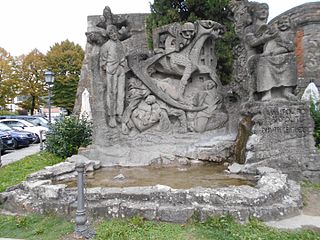
Renato Marino Mazzacurati was an Italian painter and sculptor belonging to the modern movement of the Scuola romana , of eclectic styles and able within his career span to represent the artistic currents of Cubism, Expressionism, and Realism. He believed that art could sustain social functions.
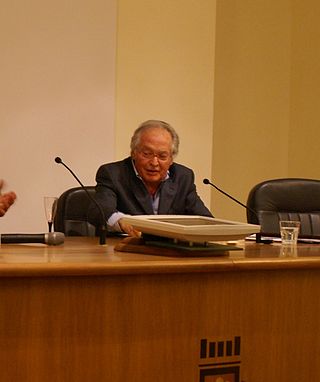
Carmine Benincasa was an Italian art critic and art historian professor.
Giulio Turcato was an Italian artist, belonging to both figurative and abstract expressionist currents.
Armando Pizzinato was an Italian painter.

The Accademia di Belle Arti di Napoli is a university-level art school in Naples. In the past it has been known as the Reale Istituto di Belle Arti and the Reale Accademia di Belle Arti. Founded by King Charles VII of Naples in 1752, it is one of the oldest art schools in Italy, and offers various levels of study up to and including the equivalent of an Italian laurea. It is located one block south of the church of Santa Maria di Costantinopoli, on the via of the latter church's name.

Enrico Crispolti was an Italian art critic, curator and art historian. From 1984 to 2005, he was professor of history of contemporary art at the Università degli Studi di Siena, and director of the school of specialisation in art history. He previously taught at the Accademia di Belle Arti in Rome (1966–1973) and at the Università degli Studi di Salerno (1973–1984). He was author of the catalogues raisonnés of the works of Enrico Baj, Lucio Fontana and Renato Guttuso. He died in Rome on 8 December 2018.

Bruno Cassinari was an Italian painter and sculptor who worked in a style that mixed cubist and expressionist elements.
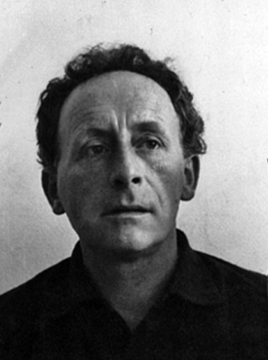
Leoncillo Leonardi, commonly known as Leoncillo, was an Italian sculptor who worked principally in glazed ceramics, often large-scale, and often using vivid colours. Until the mid-1950s his work was mostly figurative, but became more abstract thereafter. In 1946 he was among the founding members of the Nuova Secessione Artistica Italiana, which soon became the Fronte Nuovo delle Arti. He received the Premio Faenza in 1954 and again in 1964, and won the sculpture prize at the Biennale di Venezia of 1968. His work was also part of the sculpture event in the art competition at the 1948 Summer Olympics.
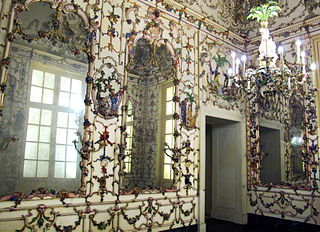
The Porcelain boudoir of Maria Amalia of Saxony is a rococo interior now located in the Palace of Capodimonte in Naples. It was originally made for the Palace of Portici in 1757–59, but has now been moved to the Capodimonte Palace. It is named after Maria Amalia of Saxony, queen of Naples. It consists of white porcelain panels decorated in high relief with festoons and genre scenes, drawing on the Chinoiserie popular at the time. It was designed by Giuseppe Gricci and produced in the Royal Porcelain Factory of Capodimonte, founded by Maria Amalia and her husband Charles of Bourbon in 1743.

The Jewel of Vicenza was a silver model of the city of Vicenza made as an ex-voto in the 16th century and attributed to the architect Andrea Palladio. The Jewel was stolen by the Napoleonic army during the Italian Campaign in the French Revolutionary Wars and subsequently destroyed. A copy was created between 2012 and 2013.

San Filippo Neri, also called the Chiesa dei Filippini or San Marcello in San Filippo Neri, is a Neoclassical-style, Roman Catholic church located on Corso Palladio #35 in the city of Vicenza, region of Veneto, Italy.
Giuseppe "Bepi" Santomaso was an Italian painter and educator. Santomaso was an important figure in 20th-century Italian painting, and he taught art at the Accademia di Belle Arti di Venezia for 20 years.
Remondini was a firm of print publishers, based in Bassano del Grappa from the mid-17th century to 1860, which was run by consecutive generations of the Remondini family:
References
- ↑ "Santomaso, Giusèppe su Enciclopedia". Sapere.it (in Italian). Retrieved 2022-06-17.